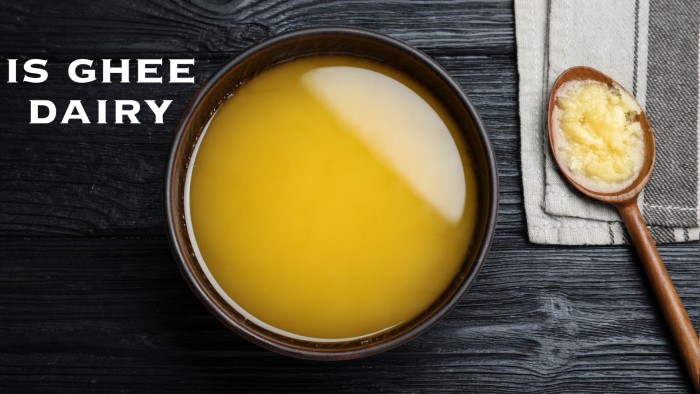Introduction Is Ghee Dairy?
Ghee has been cherished for centuries in traditional Indian and Ayurvedic medicine, and its popularity is rising globally. As consumers become more health-conscious and curious about traditional foods, one question often arises: “Is Ghee Dairy Free?” In this article, we explore what ghee is, how it is made, its nutritional profile, and the nuances behind its dairy classification.
What Is Ghee
Ghee is a type of clarified butter traditionally made by simmering butter until the water evaporates and the milk solids separate. This process results in a golden, aromatic fat that has a higher smoke point than regular butter, making it ideal for cooking. Although ghee originates from butter made from cow milk the prolonged cooking removes most of the milk solids, including nearly all lactose and casein.
How Ghee Is Made
- Butter selection high-quality butter or cow milk is chosen for its rich flavor
- Clarification Process The butter is heated slowly as it melts water evaporates and the milk solids begin to separate.
- Separating the milk solids sink to the bottom and are carefully removed or strained out, leaving behind pure butterfat.
- cooling and storage the clarified butter is then cooled and stored in airtight containers. This process not only concentrations its flavor but also extends its shelf life without the need for refrigeration
- This traditional method has been passed down through generations and is well-documented in both culinary and nutritional literature.
Is Ghee Dairy?
Ghee is produced from milk or butter, which is a dairy product obtained from milk therefore, by origin, ghee is indeed a dairy product. Lactose and Casein content the key difference lies in its its composition. Because the milk solids which contain lactose and Casein are mostly removed during the clarification process, ghee has very low levels of these components. this makes it a preferred option for many individuals who are lactose intolerant or have mild sensitivities to dairy proteins.
From regulatory and culinary perspectives despite its reduced lactose content, ghee is still classified as a dairy product by most regulatory agencies. for culinary purposes and in dietary guidelines, it is generally grouped with other dairy fats. Thus, while ghee is dairy in origin its unique processing makes it functionally different from conventional butter or mik when it comes to lactose and casein content.
Nutritional Profile and Health Benefits?
- Rich in healthy fats ghee is the source of of saturated fats and conjugated linoleic acid (CLA) These fats play a role in energy production and can help support cells.
- Vitamins and Antioxidants it contains fat-soluble vitamins A, D, E, and K Antioxidants present is ghee may help fight inflammation and oxidative stress.
- High Smoke Point: With a smoke point of around 485 Degrees Fahrenheit and 252 degrees Celsius ghee is stable at high temperatures, making it an excellent choice for sautering frying,g, and other high-heat cooking methods.
- Digestive Aid In ayurvedic medicine, ghee is praised for its ability to improve digestion and support gut health by lubricating the digestive tract and enhancing nutrient absorption.
Conclusion Is Ghee Dairy?
Yes, ghee is dairy it is derived from butter, which it turn comes from milk, however, thanks to its traditional preparation process, ghee has negligible amounts of lactose and casein. This unique characteristic not only makes it a staple in traditional cuisine but also positions it as an alternative fat for those who are sensitive to lactose, provided they do not have a severe dairy allergy.

